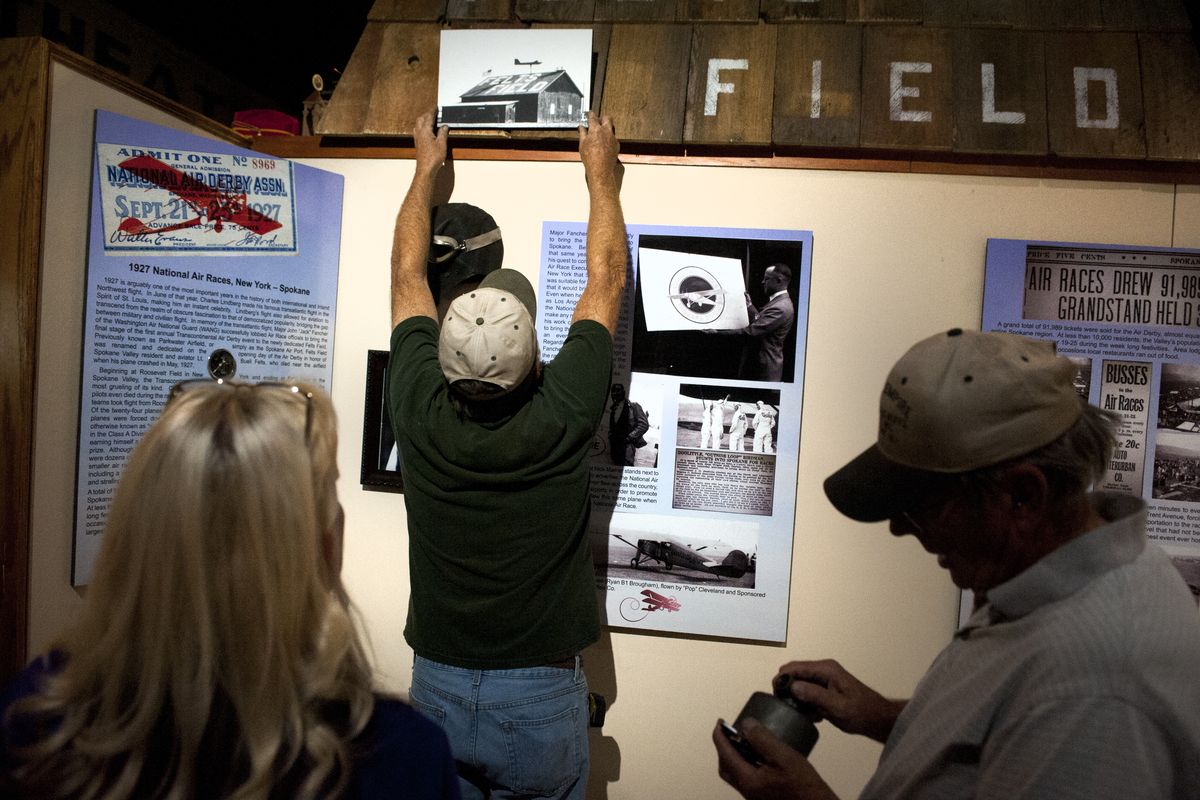Museum honors 1927 air race

In 1927, aviation was capturing America’s imagination. In May that year, Charles Lindbergh made his historic flight across the Atlantic from New York to Paris.
It was also the year Maj. Jack Fancher convinced organizers of the National Air Races to end their race in Spokane.
The Spokane Valley Heritage Museum’s new exhibit, “The 1927 National Air Races, New York-Spokane,” pays tribute to the largest event ever held in Spokane Valley. The Spokane Daily Chronicle reported 91,989 tickets were sold for the seven-day event, when the population of the Valley was about 10,000. Every park bench from across the area was brought to the field for the grandstand. Hotels were full. Restaurants ran out of food.
“Nothing has rivaled it to this date,” said Jayne Singleton, director of the Spokane Valley Heritage Museum.
Singleton said the exhibit features photographs from the event. A wooden control stick from a biplane is displayed, along with a mannequin in a leather flight suit and a mock-up of a building that was at Felts Field.
There were 24 pilots who took off from New York that September. Two died when their planes crashed after takeoff. Sixteen pilots completed the race.
The winner was Charles “Speed” Holman with a time of 19 hours, 42 minutes and 52 seconds. He took home a $10,000 prize. Local aviator Nick Mamer took home third place and a $3,000 prize.
Singleton said each day was filled with demonstrations. A young woman from Tacoma parachuted from an airplane. There were mock bombings and pilots competed in 3- and 10-mile races.
Jimmy Doolittle, who would go on to command the famous Doolittle Raid during World War II, was at the event. His signature move was known as an “outside loop,” a circle over the crowd upside down.
Lindbergh even made an appearance.
And the name Felts Field was given at the start of the festivities. Parkwater Airstrip was renamed in honor of Buell Felts, a local pilot who died in a May 1927 crash.
Singleton said there were several pilots in Spokane who flew out of Felts Field who were killed while “pushing the horizon” of aviation, including two who were connected to the air races. Mamer died in a crash in 1938. And Fancher died after performing a mock bombing in Wenatchee in 1928. When he landed, he picked up a bomb that hadn’t detonated, thinking it was a dud. It exploded in his hands.
“He wasn’t instantly killed,” said Singleton, adding that before he died he wanted everyone to know that flying was safe.
The Chronicle and The Spokesman-Review were filled with stories and photographs from the races. Singleton said buses and trains brought attendees by the thousands to Felts Field.
“We need to have another event of this magnitude,” she said.